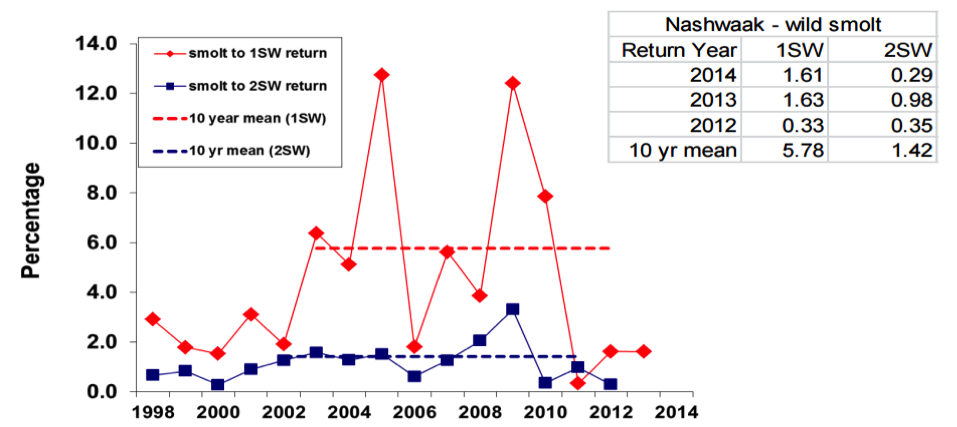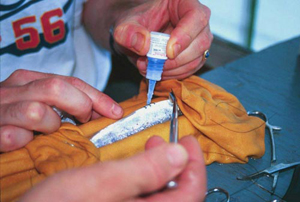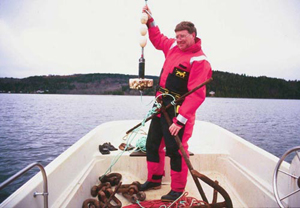Nashwaak Watershed Association
Salmon Protection & Monitoring
From 1995 to 2008, the NWAI was involved in many salmon-related research projects in partnership with Department of Fisheries and Oceans, UNB, and First Nations groups.
Smolt Wheel
Since 1998, we have cooperated with DFO, to operate a smolt wheel at Durham Bridge each spring. The smolt wheel is a device that floats in the river and collects salmon smolt as they migrate downstream toward the ocean. The smolt are directed into a tank and are counted, sampled and, in some cases, marked. The count occurs between April and June. The purpose is to estimate smolt numbers on the Nashwaak, which are then compared with adult salmon returns to the counting fence in the following summers to give an idea of survival and growth of the fish at sea.
If you are interested in volunteering to assist with smolt wheel operations, please contact us.
Adult Returns
A counting fence is located 23 km up the Nashwaak and has operated since 1972 by DFO and, since 1993, in partnership with the Kingsclear and Oromocto First Nations and the NWAI. Counts are done between May and October and are used to calculate return rates of wild smolt after either 1 or 2 winters at sea. The 2015 numbers indicate that the Nashwaak population is about operating at about 6% of where it needs to be (i.e., the conservation requirement).


Gene Banking Program
In 2004, a privately constructed Atlantic salmon gene banking facility was constructed and established. The facility was intended for rearing downstream migrating juveniles smolts towards spawning size in fresh water. The program was initiated to maintain a representation of Nashwaak salmon genetics in the case that ocean returns collapsed entirely. The gene bank would also serve as a backup source of fertilized eggs if there was a total collapse of adults. Fish were intended to be reared for 2-3 years and placed back into the Nashwaak, where they were expected to return, mate, and deposit eggs. The project continued until the winter of 2005, when winter weather damaged the infrastructure. Unfortunately, the fish had to be released before they reached optimal size due to the damage.
Salmon Enhancement
In 2006-2008, the NWAI assisted DFO with a comparative stocking study between unfed salmon fry in the spring and fall fed salmon fry released in the fall. Results of the study concluded that feeding salmon fry in tanks in the summer was counterproductive to their survival and growth to the life stage at which they migrate seaward as smolt. The unfed fry gain a large advantage by spending the summer in diverse and stimulating wild habitat learning how to avoid predators and establish territories. Upon determining these results, the NWAI decided to cease all further efforts to raise salmon in tanks.
Smolt Migration Research
A 2002 – 2004 project by NWAI, in cooperation with DFO, surgically implanted acoustic tags in salmon smolt from the Nashwaak and tracked them to the Bay of Fundy. In 2002, 58% of the smolts migrated out of the Saint John River successfully. However, in 2003, only 37% of the smolt migrated out successfully. The areas of greatest concern in 2003 appeared to be the 10 kilometres between Penniac and the mouth of the Nashwaak River, where 6 smolt were lost. Results of the 2002 and 2003 study showed that the area between Evandale and the mouth of the Saint John River is hindering smolt survival and migration with 44% loss in 2002 and 50% loss in 2003. The average travel time to reach the mouth of the Saint John River from Durham Bridge was 151 hours with an average speed of 0.5 km/hr at the start of the migration and 1.0 km/hr near the end.


